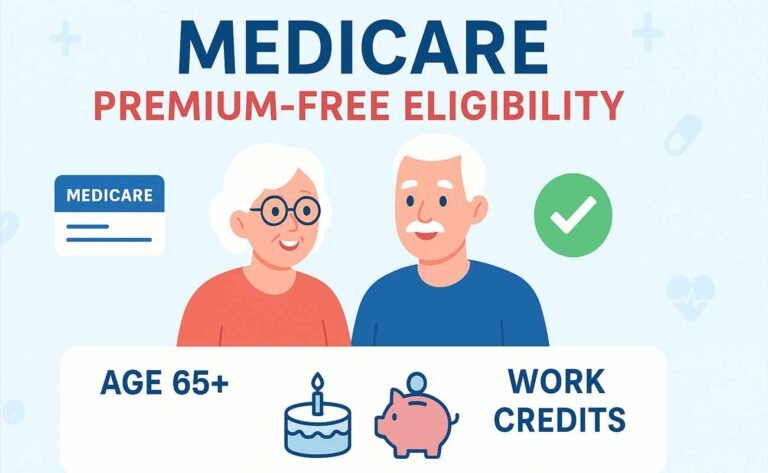Affordable Care Act (ACA) Subsidies 2025: Your Guide to Eligibility, Calculations, and the Subsidy Cliff
The Affordable Care Act (ACA) subsidies for 2025 provide crucial financial assistance to make health insurance affordable, based on your Modified Adjusted Gross Income (MAGI) compared to the Federal Poverty Level (FPL). Eligibility typically requires a household income between 100% and 400% of the FPL, though the upper limit is temporarily removed through 2025, capping premiums at 8.5% of income for a benchmark Silver plan. However, these enhanced subsidies are set to expire by December 31, 2025, potentially reintroducing the “subsidy cliff” in 2026, which could significantly increase costs for those above 400% FPL. This guide breaks down eligibility, calculation methods, and strategies to navigate the subsidy cliff, ensuring you maximize savings.
Understanding ACA subsidies is essential for anyone seeking affordable health coverage through the Marketplace. Whether you’re a single professional, a growing family, or nearing retirement, this article offers detailed lists and tables to clarify how subsidies work, who qualifies, and what to expect when the enhanced benefits sunset. Let’s dive into the specifics with clear, actionable insights to help you plan for 2025 and beyond.
What Are ACA Subsidies and Why Do They Matter?
ACA subsidies, also known as Premium Tax Credits (PTCs) and Cost-Sharing Reductions (CSRs), lower the cost of health insurance for eligible individuals and families. Premium Tax Credits reduce monthly premiums, while Cost-Sharing Reductions lower out-of-pocket expenses like deductibles and copays for those enrolled in Silver plans. These subsidies are vital for millions, with over 19.7 million Americans benefiting in 2024.
In 2025, subsidies remain enhanced due to the American Rescue Plan Act (ARPA) and Inflation Reduction Act (IRA), ensuring no one pays more than 8.5% of their income for a benchmark Silver plan. This eliminates the subsidy cliff—a sharp drop-off in assistance for incomes above 400% FPL—until the end of 2025. However, without Congressional action, 2026 could see higher premiums and the cliff’s return, impacting affordability.
Eligibility for ACA Subsidies in 2025
To qualify for ACA subsidies in 2025, you must meet specific criteria. Below is a detailed list of eligibility requirements to ensure you understand who can benefit.
Key Eligibility Criteria for ACA Subsidies
- Income Requirements: Your household’s Modified Adjusted Gross Income (MAGI) should generally be at least 100% of the FPL. Through 2025, there’s no upper income limit, but subsidies taper off as income rises.
- Marketplace Enrollment: You must purchase a plan through HealthCare.gov or a state-based Marketplace. Subsidies don’t apply to employer-sponsored plans, Medicaid, or catastrophic plans.
- Tax Filing Status: You cannot file as “Married Filing Separately” unless exceptions apply (e.g., domestic abuse or spousal abandonment).
- No Other Coverage: You must not be eligible for affordable employer coverage, Medicaid, Medicare, or CHIP.
- Residency: You must be a U.S. citizen or a lawfully present immigrant. Immigrants below 100% FPL ineligible for Medicaid may still qualify for subsidies.
- Premium Payment: You must pay your share of the premiums to maintain coverage.
2025 Federal Poverty Level (FPL) Guidelines
The FPL determines subsidy eligibility and is adjusted annually. For 2025, the FPL is based on 2024 guidelines, with higher levels for Alaska and Hawaii. Here’s a table for the 48 contiguous states and Washington, D.C.:
| Household Size | 100% FPL | 133% FPL | 150% FPL | 200% FPL | 250% FPL | 400% FPL |
|---|---|---|---|---|---|---|
| 1 Person | $15,060 | $20,058 | $22,590 | $30,120 | $37,650 | $60,240 |
| 2 People | $20,440 | $27,185 | $30,660 | $40,880 | $51,100 | $81,760 |
| 3 People | $25,820 | $34,312 | $38,730 | $51,640 | $64,550 | $103,280 |
| 4 People | $31,200 | $41,440 | $46,800 | $62,400 | $78,000 | $124,800 |
| 5 People | $36,580 | $48,568 | $54,870 | $73,160 | $91,450 | $146,320 |
| Each Additional | +$5,380 | +$7,153 | +$8,070 | +$10,760 | +$13,450 | +$21,520 |
Source: U.S. Department of Health and Human Services
For Alaska and Hawaii, FPLs are higher. For example, a single person in Alaska has a 100% FPL of $18,810, and in Hawaii, it’s $17,310.
Special Considerations for Eligibility
- Medicaid Expansion States: In states with expanded Medicaid (most states), incomes below 138% FPL typically qualify for Medicaid, not subsidies. Non-expansion states (e.g., Texas, Florida) have a 100% FPL minimum.
- Unemployment Benefits: Those receiving unemployment benefits in 2025 may qualify for enhanced subsidies, including low-cost, low-deductible plans.
- Family Glitch Fix: Since 2022, family members of those with unaffordable employer plans can access subsidies, improving access for dependents.
How Are ACA Subsidies Calculated in 2025?
Calculating your subsidy involves comparing your MAGI to the FPL and determining your expected contribution toward a benchmark Silver plan (the second-lowest-cost Silver plan in your area). Here’s a step-by-step breakdown.
Steps to Calculate Your ACA Subsidy
- Determine Your MAGI: Include wages, self-employment income, investment income, and Social Security benefits, minus deductions like IRA contributions or student loan interest.
- Compare to FPL: Divide your MAGI by the 100% FPL for your household size to find your FPL percentage.
- Identify Expected Contribution: Use the 2025 applicable percentage table to see what portion of your income you’re expected to pay.
- Find Benchmark Plan Cost: Check HealthCare.gov or your state Marketplace for the annual cost of the second-lowest-cost Silver plan.
- Calculate Subsidy: Subtract your expected contribution from the benchmark plan cost. The difference is your subsidy.
2025 Applicable Percentage Table
This table shows how much of your income you’re expected to contribute toward premiums in 2025:
| Income (% of FPL) | Expected Contribution (% of Income) |
|---|---|
| < 133% | 0% |
| 133% – 150% | 0% |
| 150% – 200% | 0% – 2% |
| 200% – 250% | 2% – 4% |
| 250% – 300% | 4% – 6% |
| 300% – 400% | 6% – 8.5% |
| > 400% | 8.5% |
Example Calculations
Let’s look at three scenarios to illustrate how subsidies are calculated:
- Single Individual, $20,000 MAGI (~133% FPL)
- Expected Contribution: 0% of income ($0/year).
- Benchmark Plan Cost: $5,500/year.
- Subsidy: $5,500 – $0 = $5,500/year ($458.33/month).
- Result: This person pays $0 for a benchmark Silver plan, with the subsidy covering the full premium.
- Family of Four, $60,000 MAGI (~192% FPL)
- Expected Contribution: 4.14% – 6.52% of income ($2,484 – $3,912/year).
- Benchmark Plan Cost: $15,000/year.
- Subsidy: $15,000 – $2,484 = $12,516/year ($1,043/month) or $15,000 – $3,912 = $11,088/year ($924/month).
- Result: The family pays $207 – $326/month, with subsidies covering the rest.
- Individual, $75,000 MAGI (~498% FPL)
- Expected Contribution: 8.5% of income ($6,375/year).
- Benchmark Plan Cost: $7,500/year.
- Subsidy: $7,500 – $6,375 = $1,125/year ($93.75/month).
- Result: This person pays $531.25/month, with a modest subsidy.
Cost-Sharing Reductions (CSRs)
If your MAGI is between 100% and 250% FPL and you enroll in a Silver plan, you may qualify for CSRs, which lower deductibles, copays, and out-of-pocket maximums. Here’s a quick list of CSR benefits:
- Reduced Deductibles: For example, a $5,000 deductible might drop to $1,500.
- Lower Copays: A $40 doctor visit copay could decrease to $15.
- Capped Out-of-Pocket Costs: Out-of-pocket maximums may be significantly reduced, saving thousands annually.
Understanding the Subsidy Cliff and Its 2025 Status
The subsidy cliff refers to the sharp drop in financial assistance for those whose income exceeds 400% FPL. Before 2021, if your income went even $1 over this threshold, you lost all subsidies, leading to unaffordable premiums. The ARPA and IRA eliminated this cliff through 2025, capping premiums at 8.5% of income regardless of how high your income is.
Current Status in 2025
- No Cliff: Thanks to the IRA, subsidies taper gradually for incomes above 400% FPL, ensuring affordability. For example, a family of four earning $150,000 pays no more than $12,750/year (8.5% of income) for a benchmark plan.
- Expiration Risk: These enhancements expire on December 31, 2025. Without renewal, the cliff returns in 2026, potentially increasing premiums by 75% or more for some enrollees.
Impact of the Subsidy Cliff’s Return in 2026
If Congress doesn’t extend the enhanced subsidies, here’s what could happen:
- Higher Premiums: Enrollees above 400% FPL could lose subsidies entirely, facing full plan costs. For instance, a $15,000/year plan would cost the full amount, compared to $12,750 with subsidies.
- Enrollment Drops: The Congressional Budget Office estimates ACA enrollment could fall from 22.8 million in 2025 to 18.9 million in 2026.
- Increased Uninsured Rates: Some may forgo coverage, leading to higher uninsured rates, especially in Southern states with high Marketplace reliance.
Strategies to Mitigate the Subsidy Cliff
To prepare for potential changes, consider these proactive steps:
- Estimate Income Carefully: Underestimating income slightly (within reason) can qualify you for larger subsidies or CSRs without repayment risk for CSRs.
- Monitor Legislation: Stay updated on Congressional actions via resources like KFF’s ACA Updates for news on subsidy extensions.
- Explore Plan Options: If the cliff returns, Bronze plans may be more affordable than Silver or Gold plans without subsidies.
- Adjust Income: If possible, reduce MAGI through pre-tax contributions (e.g., 401(k), HSA) to stay below 400% FPL. For more on tax-advantaged accounts, see our 2025 Stimulus Check Guide.
Common Mistakes to Avoid When Applying for Subsidies
Navigating ACA subsidies can be tricky. Here’s a list of pitfalls and how to avoid them:
- Overestimating Income: If your actual income is lower than estimated, you may receive a tax refund. However, overestimating can lead to missed subsidies. Use last year’s tax return as a guide.
- Not Reporting Changes: Income or household changes (e.g., marriage, job loss) must be reported to the Marketplace promptly to adjust subsidies and avoid repayment.
- Choosing the Wrong Plan: CSRs only apply to Silver plans. Selecting a Bronze or Gold plan means missing out on reduced out-of-pocket costs.
- Ignoring Medicaid Eligibility: Incomes below 138% FPL in expansion states may qualify for Medicaid, which is often more cost-effective than subsidized Marketplace plans.
- Not Reconciling Subsidies: You must file taxes and reconcile Advance Premium Tax Credits (APTCs) to avoid penalties or repayment.
How to Apply for ACA Subsidies in 2025
Applying for subsidies is straightforward through the Marketplace. Follow these steps:
- Visit HealthCare.gov: Or use your state’s Marketplace if applicable (e.g., Covered California).
- Create an Account: Provide personal details, including household size and estimated 2025 income.
- Estimate MAGI: Include all taxable income and adjustments (e.g., IRA contributions). Use the IRS’s MAGI guide for accuracy.
- Select a Plan: Compare Bronze, Silver, Gold, or Platinum plans. Silver plans are best for CSRs if eligible.
- Apply Subsidies: Choose to apply your subsidy monthly (APTC) to lower premiums or claim it as a tax credit when filing.
Tips for a Smooth Application
- Gather Documents: Have pay stubs, tax returns, and Social Security numbers ready.
- Check Deadlines: Open enrollment typically runs from November 1 to January 15, with special enrollment for life changes.
- Use Calculators: Tools like the KFF Health Insurance Marketplace Calculator can estimate your subsidy.
- Seek Assistance: Call HealthCare.gov at 800-318-2596 or consult a licensed insurance broker.
What Happens If Subsidies Expire in 2026?
The expiration of enhanced subsidies could reshape the ACA landscape. Here’s a table summarizing potential impacts:
| Scenario | 2025 (Enhanced Subsidies) | 2026 (Without Enhancements) |
|---|---|---|
| Income > 400% FPL | Capped at 8.5% of income | No subsidies; full premium |
| Average Premium Increase | $74/month (national avg.) | Up to 75%+ increase |
| Enrollment | 22.8 million (est.) | 18.9 million (est.) |
| Cost-Sharing Reductions | Available for 100–250% FPL | Likely unchanged |
For example, a family in West Virginia earning $125,000 could see premiums rise from $885/month to $2,918/month without subsidies—a $24,392 annual increase. Planning ahead, such as exploring SNAP benefits for low-income households, can provide additional financial relief if health costs rise.
Frequently Asked Questions About ACA Subsidies
1. What Income Counts Toward MAGI?
Include wages, self-employment income, investments, and taxable Social Security benefits. Exclude child support, SSI, and gifts.
2. Can I Get Subsidies If I’m Unemployed?
Yes, especially if you receive unemployment benefits, which may qualify you for enhanced subsidies in 2025.
3. What If My Income Changes Mid-Year?
Report changes to the Marketplace immediately to adjust your subsidy. This prevents owing money or missing out on credits.
4. Are Subsidies Available in All States?
Yes, but eligibility thresholds vary in non-Medicaid expansion states like Texas or Florida.
5. How Do I Avoid Repaying Subsidies?
Estimate income accurately and report changes promptly. The IRS caps repayment for lower incomes (e.g., $325 for singles under $24,000).
Final Thoughts
ACA subsidies in 2025 offer a lifeline for affordable health insurance, but the looming subsidy cliff in 2026 demands proactive planning. By understanding eligibility, calculating your subsidy accurately, and preparing for potential changes, you can secure cost-effective coverage. Use tools like the KFF calculator, monitor legislative updates, and consult Marketplace resources to stay informed. Whether you’re navigating a tight budget or managing a higher income, these subsidies can make healthcare accessible—act now to maximize your benefits before the landscape shifts.






